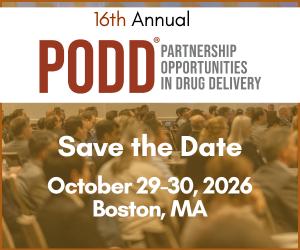Investing in More Engaging Connected Devices to Improve Patient Outcomes
Paul Upham, Head of Smart Devices, Roche/Genentech, discusses how to improve the value of connected devices by integrating better data collection, determining which data to collect and creating more engaging solutions.

How do you see the digital health and smart device space evolving over the next decade?
We will see more deployment of remote monitoring tools in the patient environment. We’re just now discovering how valuable the data can be, both for our clinical trials but also for supporting patients, caregivers and HCPs.
In the development of machine learning and predictive models, we are seeing that they need lots of data in order to be trained and to work well. As we see more self management of chronic diseases in the home environment and self-administration of therapies, we’re going to see even more need for support of patients in that environment. A key part of that will be generating data about therapy administration and lifestyle behaviors that might have an impact on their condition and then making sure those data get to the right stakeholder who can take action on them. Our opportunity in pharma is to leverage the clinical trial experience in the clinical trial environment where we have much more control and the ability to see more data, in order to design and develop these commercial solutions.
Both on the data generation side in the patients‘ environment and also on the analytics side with the pharma company and third party analytical development, these investments will go towards supporting patients to have better outcomes, especially with self-managed therapies.
What are the barriers to achieving this evolution?
User engagement and patient-centered user design is a key barrier for us to overcome. In general, pharma is still not very good at creating engaging digital solutions for patients. We need to partner with companies that are better at that because it is really challenging to create digital solutions that patients want to use, especially because this is about health and healthcare as opposed to entertainment like YouTube, Instagram and TikTok. The opportunity is to leverage some of the behavioral designs and user experience models to better engage patients and make it more valuable for them to use these digital solutions.
The second barrier is the ever-present cybersecurity and data privacy risks. Whether it’s data coming back to the pharmaceutical company in a clinical trial or whether it is in the commercial setting, making sure the entire ecosystem of this patient data is secure and impenetrable is key. We can see from the consumer world that this requires constant software updates and security patches. We need to replicate that in the digital health space if we want to build trust with patients and the healthcare community.
“User engagement and patient-centered user design is a key barrier for us to overcome. In general, pharma is still not very good at creating engaging digital solutions for patients.”
How should companies leverage the data collected on these devices?
There are a couple of different categories of data. There is the kind of data that an Apple Watch or a Fitbit might capture and generate and store, which might be terabytes of data. We don’t have a great idea or analytical models that can tell us which parts of that data are most relevant for a particular condition or even if there is a particular behavior associated with a disease or condition that might be of interest to us.
Then there is the type of data from relatively simple things like connected drug delivery devices. It’s a dramatically smaller amount of data. Imagine a patient taking a weekly injection with a connected autoinjector for a couple of years. That would be 104 data points over two years. We have some evidence from our analytics and algorithm teams that this relatively little bit of data from connected drug delivery devices and tools and sensors more specifically targeted at understanding a condition work a lot better to help us support patients because they are so directly connected to the disease and behaviors of interest.
How do those different classes of data impact decisions around analytics?
The ways that we encourage use, create a good user experience and use those data are quite different from these consumer companies because they generate a lot of data but then we need to figure out which of those data points are most relevant to improving outcomes for patients. With connected drug delivery and connected diagnostics, where we have more control, we haven’t done a great job on user experience but we do have a good idea of how useful those data could be to improve patient outcomes.
How can developers better integrate connectivity into delivery?
One way is to design these solutions for much more passive data collection so we are not reliant on the patient doing one more thing. My preference would be to not ask the patient to do “one more thing,” whether that means tapping a button or assembling something for the purpose of generating interesting data for the pharma company. This passive data collection requires us to inform patients and their healthcare teams about the data collected, which is easier to do in a clinical trial where there is a pretty rigorous informed consent process but in a commercial environment, we have to make sure patients understand and consent to that because at the end of the day, it's the patient's data. That to me is a tradeoff because while you can get more data from passive data collection, you will inevitably have patients decline, which will mean zero data collection from them. You need to invest in establishing trust between the company collecting data and the patient.
”My preference would be to not ask the patient to do “one more thing,” whether that means tapping a button or assembling something for the purpose of generating interesting data for the pharma company.”
How do you encourage greater buy-in/adoption from patients?
Whatever you’re integrating also needs to be valuable to the patient first, then their healthcare team and to caregivers and then to pharma. If it isn’t providing valuable feedback and information to the patient first, you won’t overcome those other hurdles for engagement and use. Part of that is understanding patients and their lifestyles really well, beyond just understanding their disease and therapeutics journeys. This includes understanding what in a patient’s life might get in the way of therapy, financial aspects, social determinants of health, and more. At a minimum, you don’t need to solve for all of these elements but if we can know them and account for them in the types of recommendations we deliver to those patients and tailor the user experience for individual patients, it will lead to much more engagement.
Can you give practical examples of these external factors companies need to take into account when deploying connected devices?
For apps we’ve deployed in clinical trials, there is a significant emphasis in their design on tracking by asking the patient to tell us when they took their medication and fill out a virtual diary and track symptoms. We see the same thing with food and exercise apps. And this becomes a data vacuum, where the data moves in one direction from the patient to the receiving company while delivering limited value to the patients themselves, leading them to quickly lose motivation for filling out all the tracking information.
If we are going to capture data from the patients’ environments, they need to get some sort of feedback that will be valuable and help them improve their self-management. It doesn’t have to be outcome data or clinical data or analytics on how their disease is progressing. It can be positive reinforcement or process feedback, like, “You’re on day seven of your first month of this therapy,” or “You’re completed these 12 things. Great job!” This can go a long way towards keeping a patient engaged and motivated.
“If we are going to capture data from the patients’ environments, they need to get some sort of feedback that will be valuable and help them improve their self-management.”
How do we justify the cost of these connected technologies?
We are seeing a growing literature of evidence that with good user experience design and user interface design, we can ensure more sustained engagement and deliver value to the patient. The easiest business case for these solutions is to see improved adherence to therapy, especially for rare diseases where therapies tend to be quite expensive and a small movement in percent of people adherent to therapy is associated with a significant increase in revenue for a pharma company.
Often, the problem isn’t the business case or the cost of the solution but instead that companies don’t employ the right use of software engineering user experience, design and methodologies in these systems. We need to get better at understanding good user experience design and partner with companies to help us make more engaging solutions. While this is an increased expense, the business case is pretty compelling.
How do companies employ these more engaging solutions?
The challenge is that we don’t have great evidence for exactly what improved adherence. Often, the approach is to assume that if patients are forgetting to take their dose, they need reminders, which highlights two misunderstandings. One is that all the best evidence indicates that only 20% of therapies are missed due to forgetting. There are a whole host of other factors. And the second is the belief that a simple reminder system would even solve the forgetting problem. Most of the peer-reviewed evidence refutes that as well.
Part of making the business case for these solutions and improving adherence requires us to work backwards and figure out what gets in the way of adherence. We can’t generate data to know what works unless we create more engaging solutions. While this will lead to an increase in cost, we can experiment with these technologies to learn how to optimize adherence leading to improved outcomes for patients.









